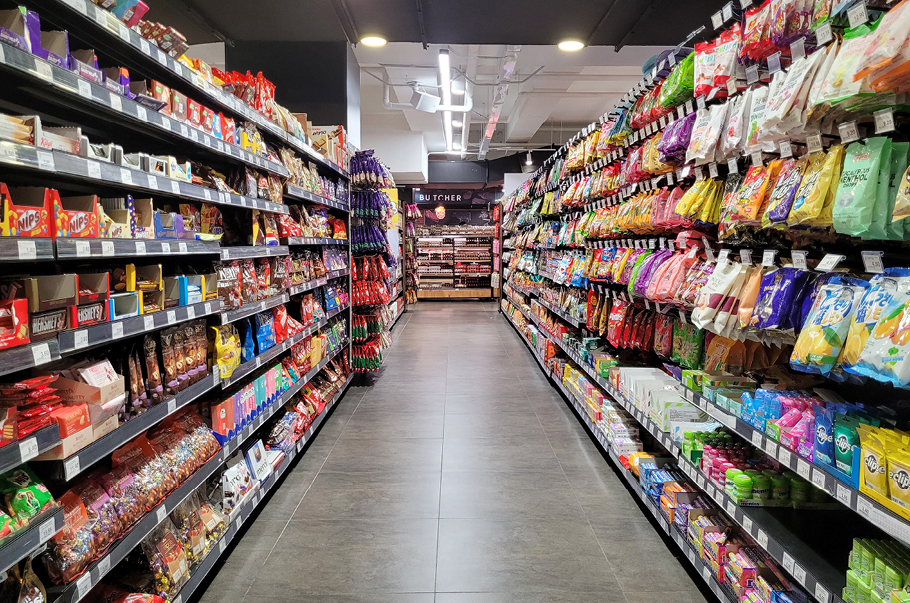Situation on the confectionery market
Sweets are one of the largest categories – Poles very often choose sweets as a small “something” for themselves or give them as gifts. Despite the difficult situation on the cocoa market, the confectionery market continues to grow and, according to NielsenIQ3 data, reached a value of PLN 19.8 billion in the whole of 2024, i.e. 6.3% more than the year before. As it turns out, the favourite sweets of Poles are cakes and pre-packaged biscuits, on which they spent the most (PLN 3.9 billion). Next places are taken ex aequo by pralines, which are perfect as gifts, and chocolate bars - both categories reached a result of PLN 3 billion, and all three account for half of the confectionery market.
The NielsenIQ data also shows that all confectionery categories have seen an increase in sales value in the last twelve months, but chewing gum, muesli bars and chocolate bars have grown the most. “Muesli bars also recorded the most impressive increase in sales volume (in kg) compared to 2023 (+7.1%). Also ‘on the upside’, although much smaller, were ready-made cakes and pralines. In this respect, they stood out against other categories, which were either stable or recorded a decline in volume,” explains Wojciech Rydzewski, Client Business Partner at NielsenIQ. A much worse result was recorded by jerky: -15.5% in volume terms. The reason for this can be attributed to the 18.6% increase in the average price per kilo.
“Across the confectionery market as a whole, supermarkets and discounters recorded the most dynamic growth in sales value among channels - 10% each. Both channels were stable in terms of volume, while hypermarkets and small-format shops recorded declines of more than 8%. Discounters hold a dominant position in the market and are responsible for 43.7% of the value and 53.6% of the volume of sweet snacks sold in Poland,” – comments the NielsenIQ expert.
With rising prices due to inflation and the rising cost of cocoa, it might seem that consumers are turning to private label sweets more often. However, it turns out that indeed this is a trend that can be observed in many food categories, but it does not apply to confectionery. According to CMR data, when looking at volume sales and the number of private label packs in supermarkets, both have fallen, comparing 2023 to 2022.
In this channel, biscuits and pralines were the largest segment in terms of sales value, accounting for around 22% and 15% respectively. Impulse wafers and chocolate bars were jointly responsible for almost 15% and chocolates for 13%. The result of 5% was achieved by jellies and marshmallows. It is also worth noting that supermarkets had the highest number of different variants of biscuits, with almost 150 different types on shop shelves, according to CMR data. Supermarket consumers also had a wide choice of pralines - just over 60 variants. At the time, Wedel Ptasie Mleczko vanilla in dessert chocolate 340 g, Merci Finest Selection Red 250 g and Ferrero Raffaello coconut 150 g were the most popular. It is also worth noting that both the biscuit and praline categories saw new arrivals in 2023 - 12 and six variants respectively.
“The largest number of new products was in impulse sweets, a total of 20. These were distributed equally: 10 new impulse wafers and 10 new chocolate bars. They account for around as much as 2% of the share in the number of packages. 20 novelties is a significant number, especially when compared to the average number of variants in a supermarket of around 90. What is more, in 2023, the number has only increased by around 2 variants. This means that some novelties had to replace other variants. However, not the best-selling products. And in 2023 these were: 2 versions of Kinder Bueno and Prince Polo Classic XXL,” comments Przemysław Bojanowski, analyst at CMR.
Cocoa market challenges
The cocoa market has been facing difficulties for some time, which has had a substantial impact on the cost of raw materials. This has led to an increase in the cost of chocolate and other confectionary products containing cocoa. As Dr Justyna Rybacka, an economics and finance expert at WSB Merito University, observes, the rise in cocoa prices on global markets has been particularly noteworthy over the past several months. From May 2023 to the second half of April 2024, prices have surged from just over GBP 2,000 to over GBP 11,000 per tonne, marking a more than fivefold increase.
‘Cocoa prices are set to continue rising on global exchanges, with no signs of this trend abating in the near future. In April, the price of a tonne of this commodity was well above US$11,000, and it is my opinion that this is not the peak. While it is true that it has fallen slightly recently, it is now back to its previous highs. Later this year, it is anticipated that the value will exceed USD 13,000, potentially approaching USD 15,000.’ Robert Biegaj, retail market expert at Offerista Group As previously discussed, rising cocoa prices have the greatest impact on the cost of sweets and desserts. According to the report, the average price has increased by 10.6% year-on-year, and experts admit that there are many indications that this is not the end of the increases.
According to industry experts, this situation is due to a poor harvest of the raw material in Africa, the world’s main supplier of cocoa seeds. It should be noted that cocoa trees are not very resilient to weather changes, and climate issues can significantly impact yields. According to the report, UNCTAD predicted a cocoa shortage of 374 tonnes in 2024, which is significantly higher than the 74,000 tonnes recorded in 2023. The long-term outlook for cocoa prices is positive, with a predicted decline set to lead to cost reductions. This will incentivise farmers to maintain or resume production, resulting in a balanced supply and demand scenario. We anticipate that this will happen in approximately four to five years, which is the typical timeframe for cocoa trees to bear fruit.
Katarzyna Jastrzębska
Editor












